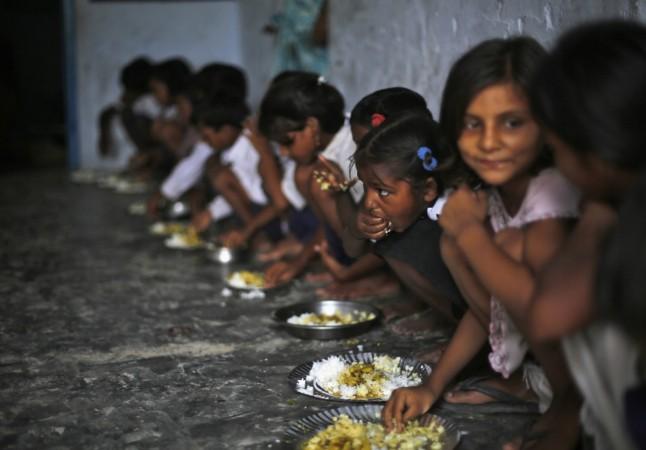
Statistics according to the Global Hunger Index (GHI), which is calculated by the International Food Policy Research Institute (IFPRI), revealed that hunger levels in the developing nations have reduced up to 29 percent since 2000, but India has been dubbed as "a country with serious hunger levels" in 2016. These remarks were made by the IFPRI on Tuesday, October 11.
India got this tag despite development in the fields of nutrition and hunger and the country needs to improve a lot before it is able to attain the UN goal of curbing hunger by 2030.
Four main parameters were taken into account for calculating the GHI and these are -- stunted and wasted children under the age of five, infant mortality rate, shares of the undernourished people, reported the Times of India.
The term stunting refers to the height of the child as per age and wasting refers to the weight of the child as per the height.
Out of the 131 countries studied by the IFPRI, data was accumulated for 118 countries. The study focused on stunted and wasted children.
The IFPRI calculated the GHI for 2016 based on the fact that 15 percent of the Indian population is under nourished and faces food deficiency quantity as well as quality wise. The statistics revealed that almost 40 percent of children under the age of five are found stunted and 15 percent were found to be wasted. The severe hunger levels prevailing in the country led to a mortality rate of 4.8 percent among infants under five.
"India is slated to become the world's most populous nation in just six years, and it's crucial that we meet this milestone with a record of ensuring that the expected 1.4 billion Indians have enough nutritious food to lead healthy and successful lives," Hindustan Times quoted PK Joshi, International Food Policy Research Institute (IFPRI) director for South Asia as saying.
"India is making tremendous progress—but we have significant challenges ahead," he added.
Malnutrition is still found to adversely affect India, despite the country running two of world's largest programmes for supporting child nutrition. The two major hunger curbing programmes run by India are the mid-day meal programme for school going children till the age of 14 and the Integrated Child Development Services (ICDS) programme for children under the age of six.
This study stated that despite the hunger rate deteriorating at the same rate as in 1992, the hunger scores for 45 countries will still be at alarming or moderate level in the year 2030. The countries being referred to in here include India, Pakistan, Afghanistan, Haiti and Yemen.
Reasons responsible for such a condition in India are unemployment, poverty, lack of heathcare facilities and drinking water and proper sanitation. Though an improvement of 29 percent has been observed in India in comparison to the previous years' statistics of wasted and stunted children under five years of age, it is still said to have an alarming hunger level.
"The 2030 Agenda set a clear global objective for an end to hunger - everywhere - within the next 14 years," says David Nabarro, special adviser to the UN secretary-general on the 2030 Agenda for Sustainable Development and Climate Change, according to Hindustan Times.
"Too many people are hungry today. There is a need for urgent, thoughtful and innovative action to ensure that no one ever goes hungry again, Nabarro said further."
















